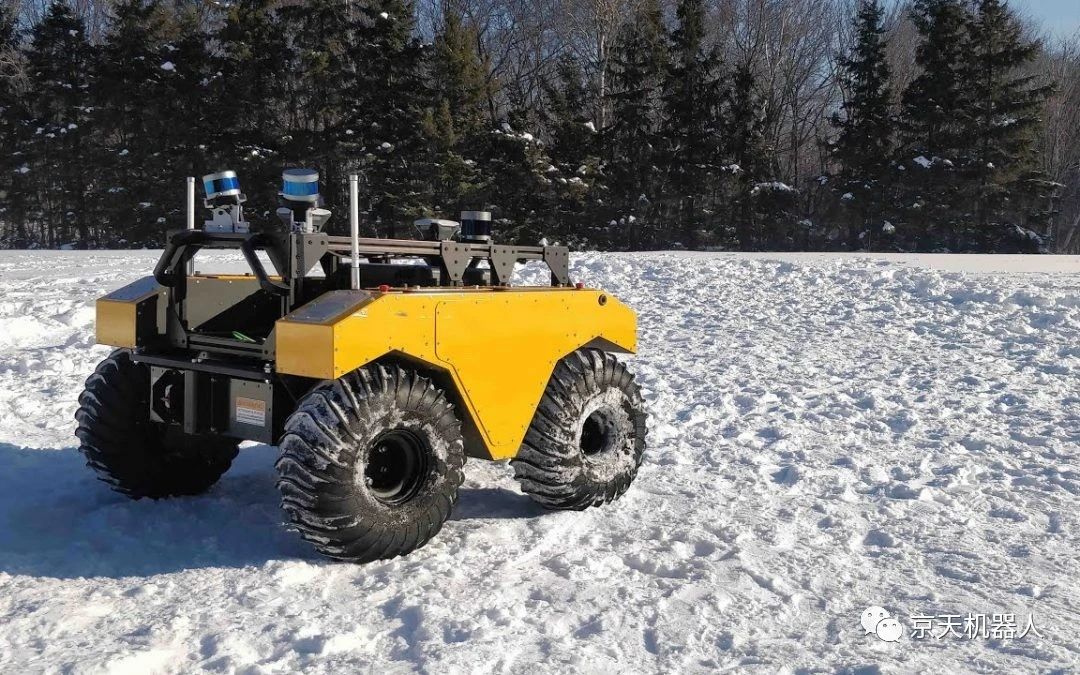
Canadians best understand the cruel nature of winter. When venturing north during the colder months, the weather and terrain can be very dangerous. However, research and exploration are constantly responding to the challenges of the harsh climatic conditions in the north. A dedicated team from the Northern Robotics Laboratory (Norlab) of the University of Laval, Quebec, is pushing robotic navigation to the absolute limit: autonomous navigation in the snow!
The unique position of Norlab is that they are facilities dedicated to mobile and autonomous systems working in the north or under harsh conditions. The team consists of several PhD students from Laval University. Responsible for sending robots to cold regions are François Pomerleau, Ph.D. (Principal Researcher); Dr. Vladimír Kubekla (Postdoctoral); Richard Lee (Representing General Dynamics Land Systems Canada); Dominic Baril (Ph.D. student); Simon -Pierre Deschênes (doctorate student); Damien LaRocque (master student); and Olivier Gamache (master student).
By developing and exploring navigation algorithms, Norlab focuses on creating powerful mobile robots that can quickly adapt to various real-life weather and terrain conditions. Specifically, they are developing positioning algorithms for laser sensors (lidar) and 3D reconstruction environments, in situations where such tools often encounter difficulties. The test site is the Montmorency Forest, which covers more than 400 square kilometers in the north of Quebec City, with 6 months of snow in the year!
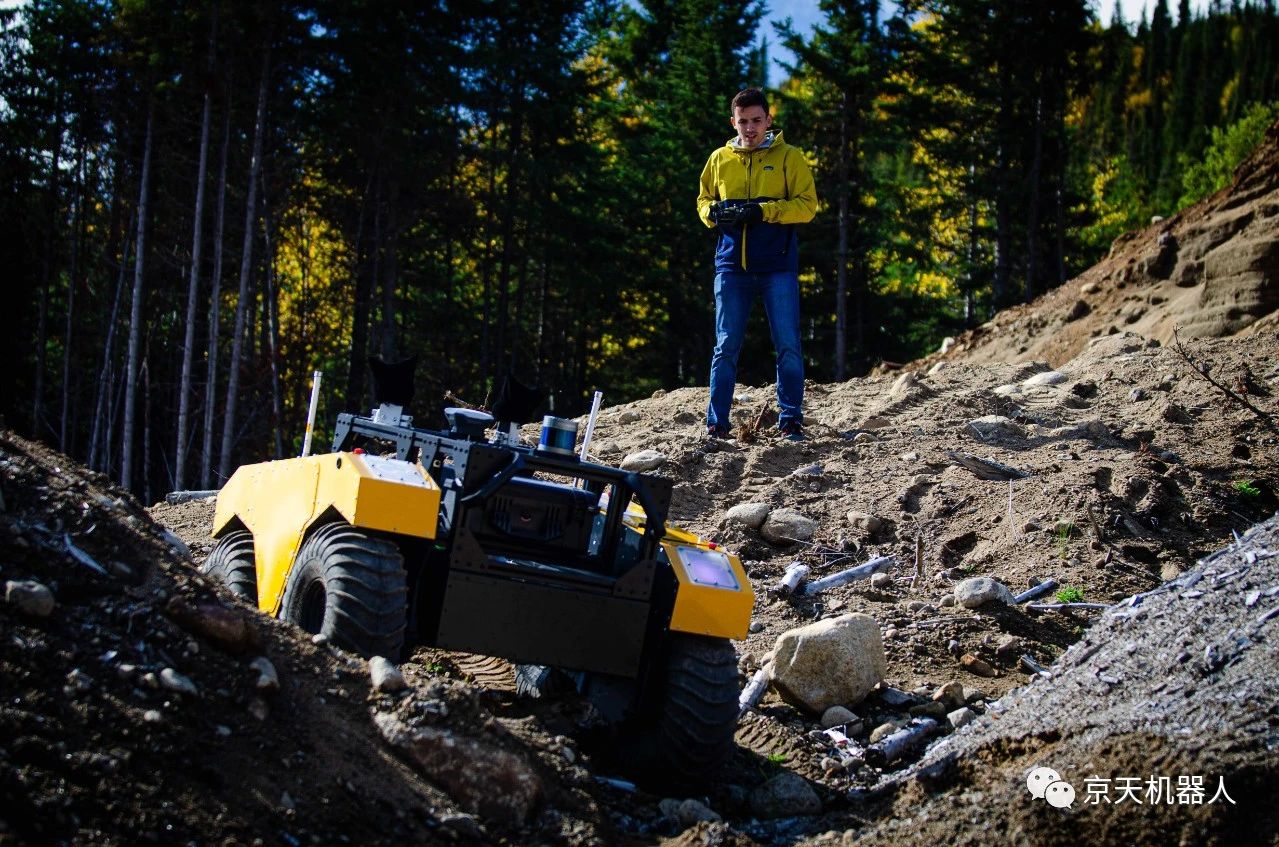
Norlab tests Warthog on uneven terrain
How to not get lost in the woods
Their project is called SNOW (Self-driving Navigation Optimized for Winter), which aims to innovate current technology to improve conditions that often become unorganized and dynamic due to winter conditions such as snow and snow. Autonomous driving in the environment. In addition, they have also established a partnership with General Dynamics Land Systems (GDLS-C) in Canada to ensure that they take root in practical applications. This type of technology is indispensable for a variety of current applications, including automatic refueling and navigation, search and rescue missions, Canadian Arctic sovereignty, freight transport on northern ice roads, and more. The picture below is where Warthog UGV comes in!
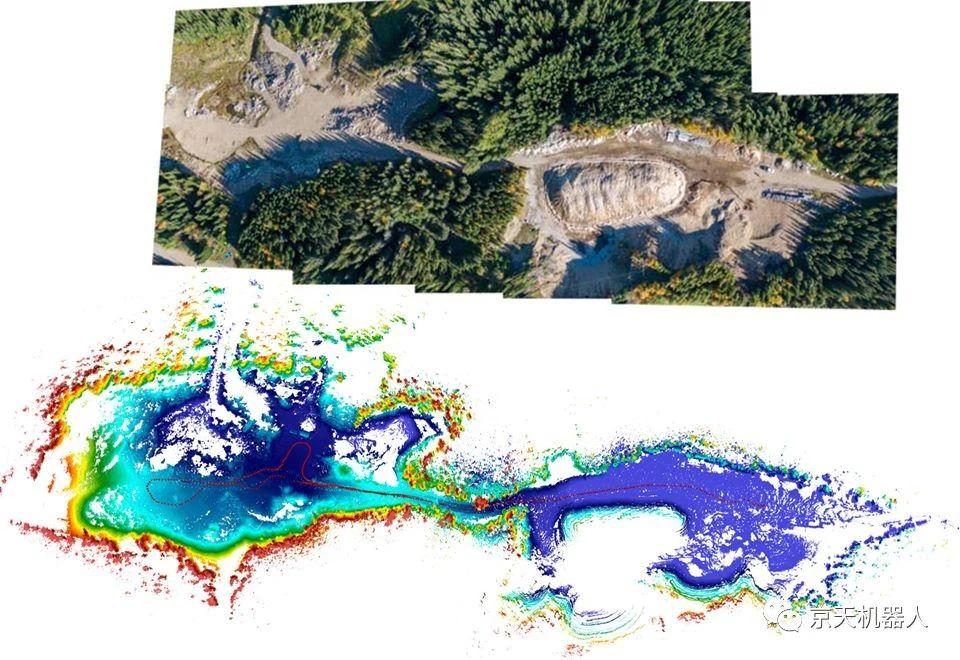
3D map of Montmorency forest generated by Warthog
Using Clearpath's largest all-terrain platform Warthog UGV, the Norlab team created a map that enables Warthog to adapt to changes in the environment caused by snow and wind, while also enabling real-time and reliable vehicle positioning. These maps will also be used as the basis for new path planning algorithms that deal with deformable obstacles and environments, such as deep snow under vehicles.
But how do you get the project to pass? Norlab equipped Warthog with a 32-beam Robosense RS-32 lidar and two 16-beam Robosense RS-16 lidars. The Iterative Closest Point (ICP) algorithm performs laser scanning from these sensors to locate the robot and map the environment. In addition, Xsens Mti-10 IMU is used in conjunction with the wheel odometer of the platform to help the robot locate. Then, two Emlid GNSS antennas are used for GNSS positioning, and an array composed of three Trimble theodolite prisms and total stations provides ground truth positioning of UGV. Finally, an embedded computer is added to calculate the advanced algorithms required for autonomous navigation.
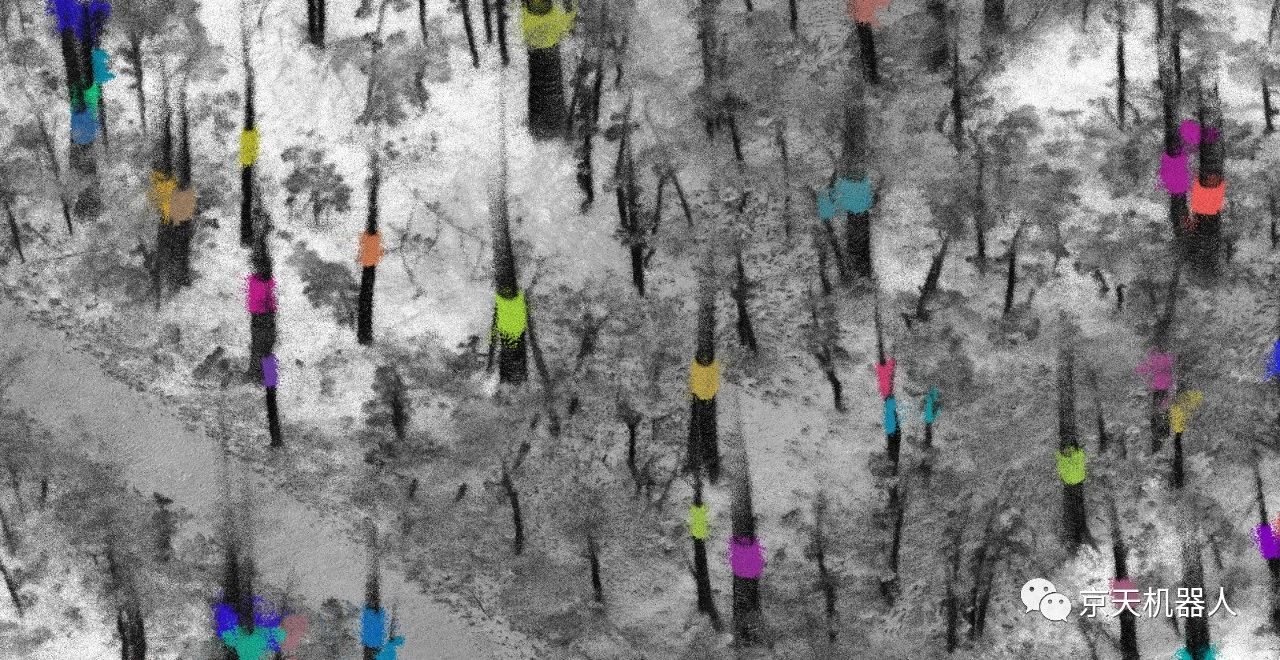
Examples of localized maps that track individual trees
Plow over obstacles
These ambitious goals are not without challenges. Snowfall and unpredictable environments make localization and mapping more difficult. In addition, autonomous robots must be able to navigate and overcome winter standard snow and ice obstacles. Warthog UGV helped bypass some of the initial problems. Thanks to its easy start-up, simplified integration and ROS-ready features, the Norlab team was able to focus on other aspects of the research and publish their work with great success.
Similarly, since it does not have to build the platform from scratch, Norlab can work out a more ambitious schedule and allocate time appropriately. In addition, Warthog's size, traction and low ground pressure allow it to cope with difficult terrain where other robots may fail. Norlab also modified its Warthog with rails to lift the robot above deep snow. By enabling navigation in this extreme environment, Norlab is able to develop complex and advanced positioning algorithms. As the team leader, Dr. François Pomerleau believes: "Warthog is a good research platform because it is easy to integrate with various sensors. It is also a very mobile platform, very suitable for our project, and aims to break through the accessibility of autonomous mobile robots. The limits of content."
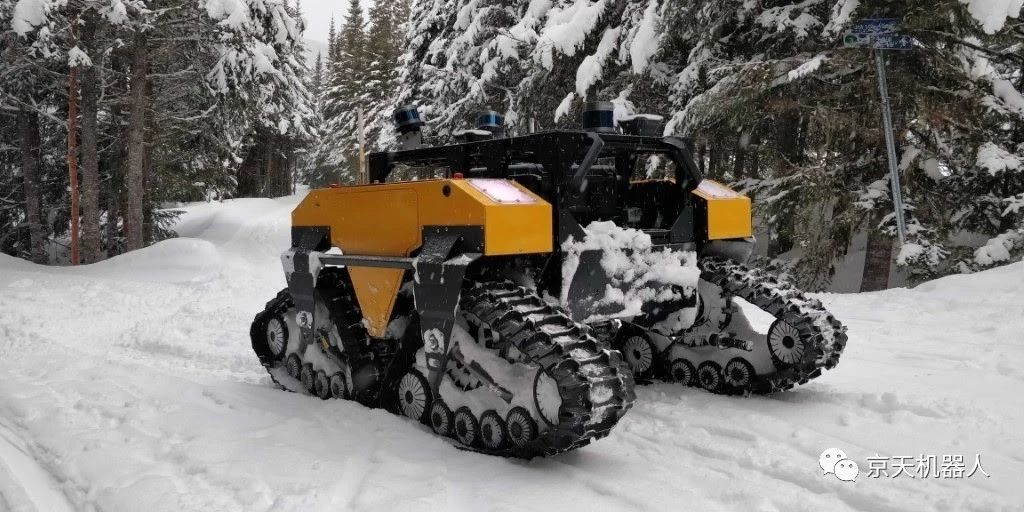
Warthogs are powered by ice and snow
As mentioned above, Norlab's research results can also point to impressive achievements. Their research results were published in "Field Robotics Magazine". The paper proposed a point cloud-based radio propagation model based on differential cloud GNSS, and an article published at the 2020 Computer and Robot Vision Conference (CRV). The paper evaluates Various kinematic models of the sub-arctic sliding mobile robot are presented. environment. The same CRV article even won the best robot vision paper at this conference! Their work has not been completed because they have been trying to improve their work, put robots into more extreme conditions, and publish their findings to promote innovation.
If you want to know more about Warthog UGV, please contact us.
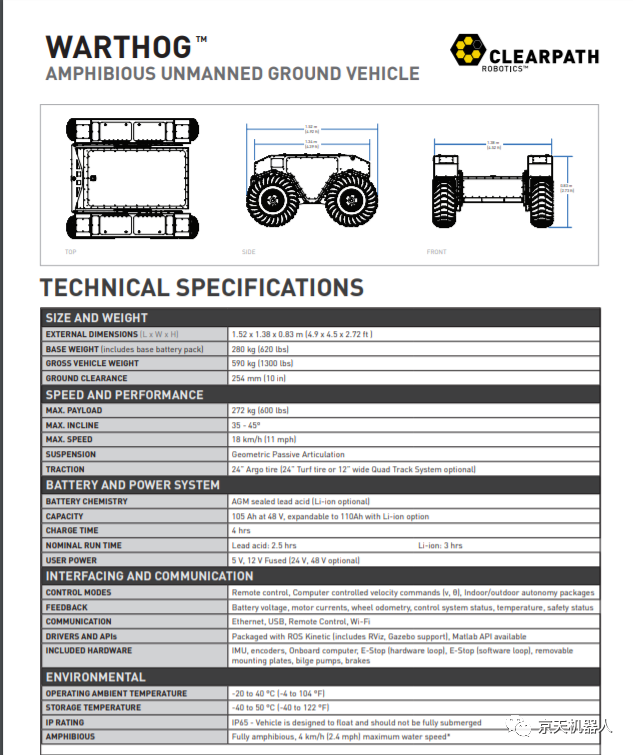

Donghu Robot Laboratory, 2nd Floor, Baogu Innovation and Entrepreneurship Center,Wuhan City,Hubei Province,China
Tel:027-87522899,027-87522877
Robot System Integration
Artificial Intelligence Robots
Mobile Robot
Collaborative Robotic Arm
ROS modular robot
Servo and sensor accessories
Scientific Research
Professional Co Construction
Training Center
Academic Conference
Experimental instruction
Jingtian Cup Event